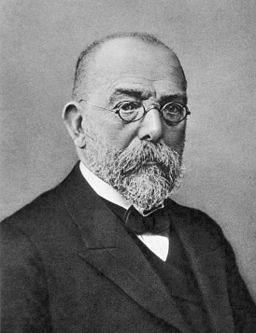Diet
Toward a 'Knowledge of Causes...and All Things Possible'
Traversing the rugged territory from observed associations to causation.
Posted September 17, 2015

“All things are hidden, obscure, and debatable if the cause of the phenomena be unknown, but everything is clear if this cause be known.” So said Louis Pasteur in his The Germ Theory of Disease and its Application to Medicine and Surgery.
Though discussions of causality date back to the ancient philosophers, it was mid-19th Century German physician Jakob Henle and later his student Robert Koch, though, who developed postulates for assessing causation in acute infectious diseases such as tuberculosis, anthrax, and tetanus. In these cases, the offending agent was found to be present in every case, caused one specific disease, and could be isolated to cause re-infection with re-exposure. (Evans, The Yale Journal of Biology and Medicine, 1976) Over the years, though, physicians began to appreciate limitations to the Henle-Koch postulates, particularly when dealing with the complexities of viruses or with chronic syndromes such as obesity.

What is a cause? “In a pragmatic perspective,” says epidemiologist Mervyn Susser (American Journal of Epidemiology, 1991), “a cause is something that makes a difference.” More specifically, in their textbook on epidemiology, Rothman et al (2008, 3rd edition) define it as an event, condition, or characteristic that precedes the onset of a disease and is necessary for its occurrence. In general, though, typically epidemiologists have skirted the notion of what constitutes a cause, says Susser. Instead they focus on determinants, exposures, and risk factors “without facing the treacherous issues of the definition of a cause.” For example, diseases can have predisposing factors (e.g. age, marital status, working environment); enabling factors that facilitate their development (e.g. climate, nutrition, availability of medical care); precipitating factors (e.g. exposure to a specific disease); and reinforcing factors (e.g. repeated exposure to an infectious agent.) (Porta, A Dictionary of Epidemiology, 5th edition, 2008)
Alternatively, epidemiologists categorize causes into "necessary" and/or "sufficient," "single" or "multiple," "direct" or "indirect." Furthermore, Mehta and Allison (Frontiers in Nutrition, 2014), in their discussion of the challenges specifically implicit in nutritional methodology and measurement, note, “Evidence of causation exists on a continuum.”
Rothman et al speculate that causal criteria “have become popular, possibly because they seem to provide a road map through complicated territory.” Causation, though, is to be differentiated from association or relationship (i.e., the probability of an occurrence of an event varies with the occurrence of another event), and correlation (i.e., the degree to which variables change together) Association, relationship, and correlation, though, are sometimes used interchangeably in epidemiology. (Porta, 2008) Importantly, correlation does not imply causation.

One researcher, considered by some to be the greatest medical statistician of the 20th Century, though trained neither as a physician nor as a statistician, (Doll, Statistics in Medicine, 1993), was willing to approach medical causation systematically. British-born Sir Austin Bradford Hill (1897-1991) began his epidemiological career with a focus on occupational medicine and observed convincing associations between environmental toxins in the work place and the subsequent development of disease. He investigated printers, bus drivers, and workers exposed to cotton, arsenic, or nickel. (Schilling, Statistics in Medicine, 1982) In the 1940s and 1950s, with his colleague Richard Doll, Hill was one of the first to report a strong link between exposure to smoking and lung cancer. Hill’s work with Doll, though, brought sharp criticism from the famous statistician Ronald A. Fisher, known for his original agricultural experiments involving randomization, who took issue with this causal link between cigarette smoking and cancer. In what seems particularly ludicrous by current thinking, Fisher, for example, suggested that perhaps it was lung cancer that causes smoking (i.e., the disease causes mucosal irritation that is relieved by smoking) rather than the inverse. (Doll, Perspectives in Biology and Medicine, 2002)
Reportedly, it was in response to Fisher’s criticism (Robbins, Southwest Journal of Pulmonary and Critical Care, 2012) that Hill wrote what became his most famous and now classic paper The Environment and Disease: Association or Causation? (Proceedings of the Royal Society of Medicine, 1965.) This year marks the fiftieth anniversary of the publication of that paper.
How did Hill approach the issue of causation? He wrote, “I have no wish, nor the skill, to embark upon a philosophical discussion of the meaning of ‘causation.’" Instead, Hill presented nine “viewpoints” (never using the word “criteria”) that explored “In what circumstances can we pass from this observed association to a verdict of causation?” Acknowledging that the cause of a disease might be either immediate and direct or remote and indirect, Hill delineated these considerations:
—Strength: “first upon my list;” size of the risk; example: death rate from cancer of the lung in cigarette smokers is nine to 10 times the rate in non-smokers, and the rate in heavy smokers is 20 to 30 times as great.
—Consistency: has the association been repeatedly observed in different people, places, circumstances, and time (especially when the results are reached both prospectively and retrospectively) and hence less likely to be due to chance?
—Specificity: limited to specific workers and to particular sites and types of disease, but diseases may have more than one cause
—Temporality: one of the most important viewpoints and particularly relevant when diseases take time to develop: does the disease follow the exposure? Example: does a particular diet lead to a disease or does the early stage of the disease lead to peculiar dietary habits?
—Biological gradient: is there a dose-response curve? Example: more cigarettes smoked, more likely cancer
—Plausibility: biologically should be consistent with (positively worded) current knowledge but often depends on the knowledge of the day.
—Coherence: should not seriously conflict (negatively worded) with generally known facts of the natural history and biology of the disease Example: Is the condition consistent with histopathological findings, etc.?
—Experiment: Can the conditions be varied experimentally, especially when evidence is obtained through the gold standard of randomized controlled trials?
—Analogy: For example, if one disease (e.g. rubella) or one drug (e.g. thalidomide) can cause birth defects, it is possible that another could do so as well.
Hill appreciated that none of his nine “viewpoints” “brought indisputable evidence” for or against cause-and-effect, i.e., neither necessary nor sufficient for establishing causation. For Hill, the “fundamental question” was always, “Is there any other way of explaining the set of facts?”
Over the years, some have criticized Hill and others, such as Susser, have elaborated on his work, by subdividing “coherence” into theoretical, factual, biological, and statistical categories. Nevertheless, Hill’s viewpoints are still used today when researchers consider causality. Recent examples include a paper by McCaddon and Miller (Nutrition Reviews, 2015) on the association between increased levels of homocysteine and cognitive decline and Frank Hu’s comprehensive review on the connection between sugar-sweetened beverages and obesity-related diseases. (Obesity Reviews, 2013)
In her book Illness as Metaphor (1977), Susan Sontag writes, “The notion that a disease can be explained only by a variety of causes is precisely characteristic of thinking about diseases whose causation is not understood.” With obesity, for example, we are dealing with neither one cause nor even one disorder. Says Hebert, Allison, and their colleagues, (Mayo Clinic Proceedings, 2013), “Obesity is not a single pathological condition but rather a sign of underlying primary pathological abnormalities…characterizing obesity as a distinct condition suggesting a single, straightforward, and unvarying etiology has biased all phases of obesity-related discourse.” Along those lines, researchers and clinicians may need to differentiate between the cause and a cause. (Doll, 2002) For the most comprehensive, systematic approach to research on obesity, with an emphasis on the importance of conducting randomized controlled trials for gathering evidence, see the 2015 paper, in the Critical Reviews in Food Science and Nutrition by Casazza and her colleagues.
How much evidence, though, is enough? Years ago, researcher Douglas Weed (International Journal of Occupational Medicine and Environmental Health, 2004) raised the provocative question, “What is the least amount of evidence… about causation—needed to recommend a public health action?” Sometimes researchers, says Weed, employ what is called the “Precautionary Principle”—preventive measures are recommended even when causation is not established scientifically. This approach is disquieting, though, particularly for obesity and overweight, and makes researchers like Casazza et al (2015) understandably concerned that presumptions and myths are treated like scientific truths.
Unfortunately, epidemiologists have yet to agree on criteria for establishing causation (Rothman et al, 2008). It is indeed disheartening, then, to recall Francis Bacon (1627, New Atlantis) and appreciate the distance from his words, “The end of our foundation is the knowledge of causes… and the enlarging of the bounds of human Empire, to the effecting of all things possible. “





